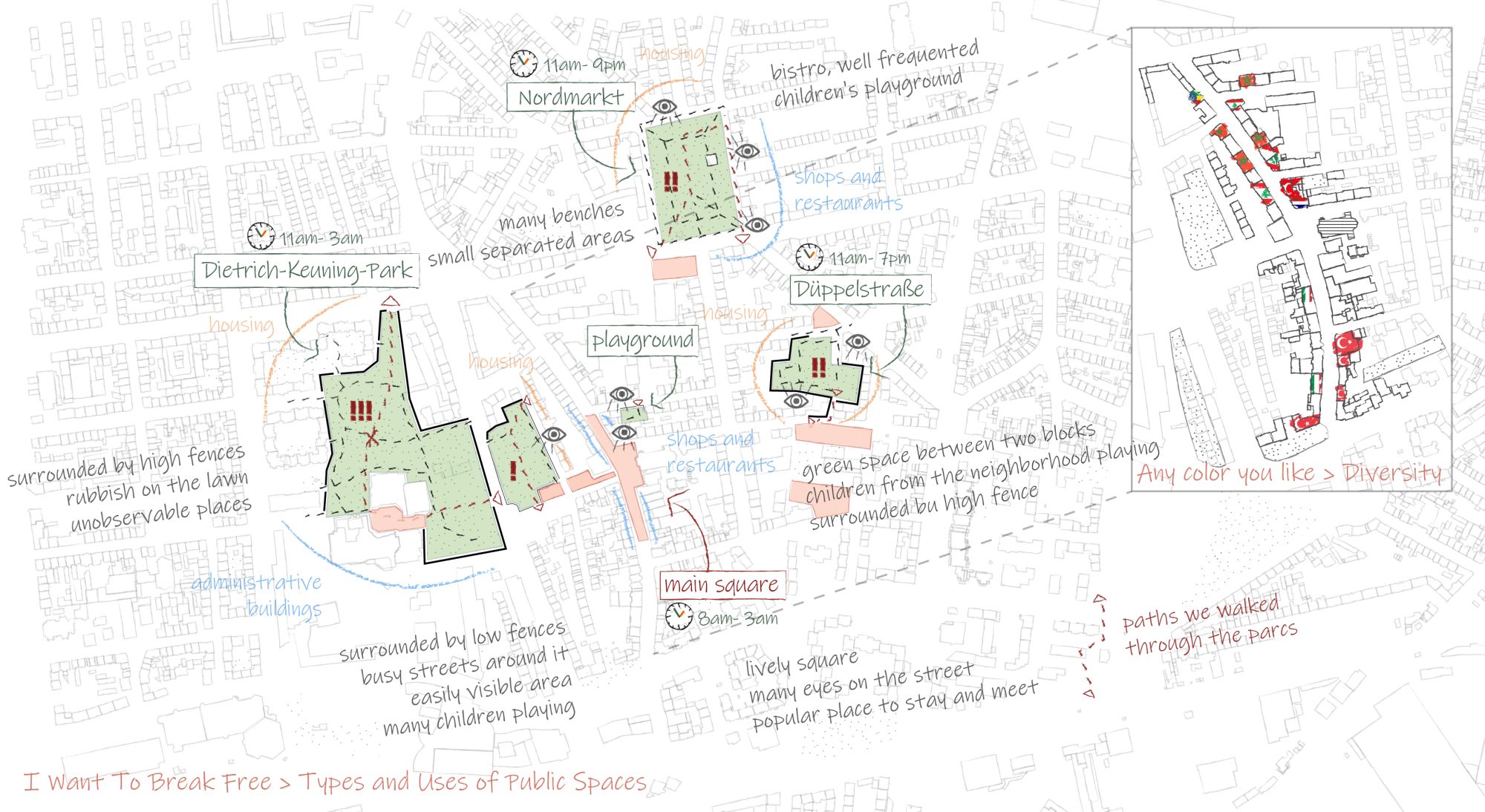Unfolding Münsterstraße
A project by Nahed Nabhan, Sara Korżyńska, Jana Schiefer, Mohammad Nabeel Jamal
Unfolding City Comlexity
Lecturer: Stefano Cozzolino
summer semester 2021
The project offers an analytical view into one of the most vividly discussed streets of Dortmund located in the Nordstadt: Münsterstraße.
Münsterstraße is a vibrant street full of shops from diverse international backgrounds, by many described as unsafe, that has been suffering for a long time because of its bad reputation and recurrent security issues. The duality between social-vibrancy and insecurity unavoidably became the main research asset of this urban exploration.
The project aimed to analyze and understand the social-spatial structure of the area based on some preeminent concepts presented in Jane Jacobs‘ book “The Death and Life of Great American Cities”. A key aspect of this work was to allow residents to share their opinions and stories about the neighborhood while abandoning the widespread and preconceived, biased opinion of the area.
The demographic diversity of Münsterstraße translates into a space that is filled with different tastes, smells, and sounds of a variety of languages, which many has reported as one of the reasons – and perhaps the main reason – why they like living in the neighborhood. Additionally, the study of permeability, in terms of blocks and streets, indicates that the street has high accessibility from the surroundings due to the existence of short blocks that host multiple small buildings with a variety of functions. When one locates oneself in any crossroad, there is always a way to Münsterstraße.
According to the survey – which included a direct interview with 18 residents out of 45 who were asked but didn’t wish to participate – people tend to enjoy life outdoor in the neighborhood. When approached in the street, interviewed people were at times friendly and welcoming and at other times less. One interesting, almost surprising aspect emerging from the survey is that the majority of the interviewed residents were in favor and agree with the presence of surveillance cameras installed in the public space to curb illegal activities such as drug dealing. This aspect is in conflict with the jacobsian idea of ‚eyes on the street‘ that, according to the author, should induce spontaneous surveillance.
To conclude, the investigation of Münsterstraße was a promising case study to observe and unfold the complexity of an urban area. In particular, the coexistence of different lifestyles and cultures and the problems that might arise. The exercise showed in practical terms how the identity of neighborhood can be at the same time its main strength but also its weakness. We believe that this situation is a clear example of the opportunity that architects and planners have to dive deeper into the understanding of sociological aspects of design, and why it is important to deal with this issue in a way that is serious and goes beyond biased reputations.




